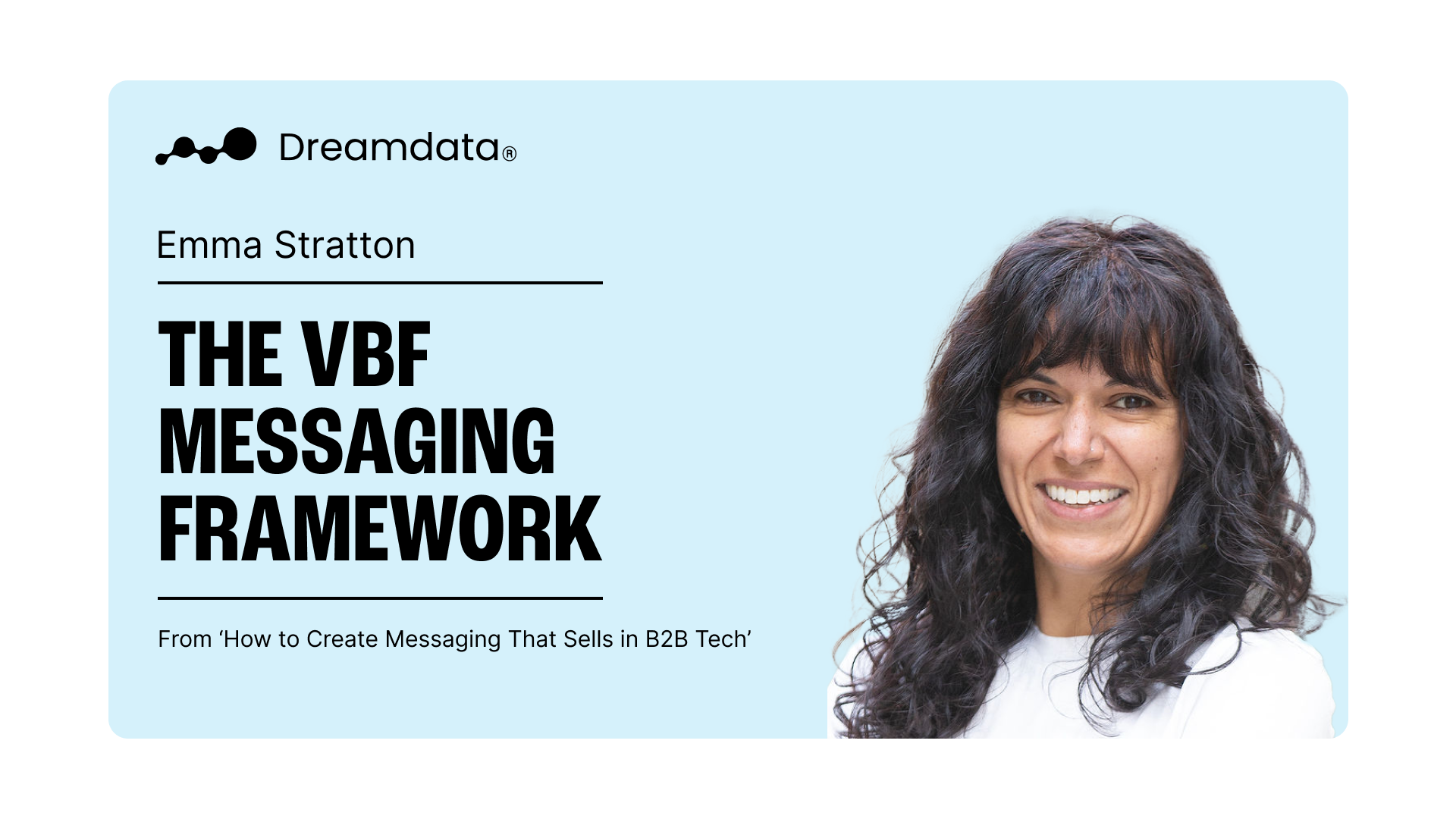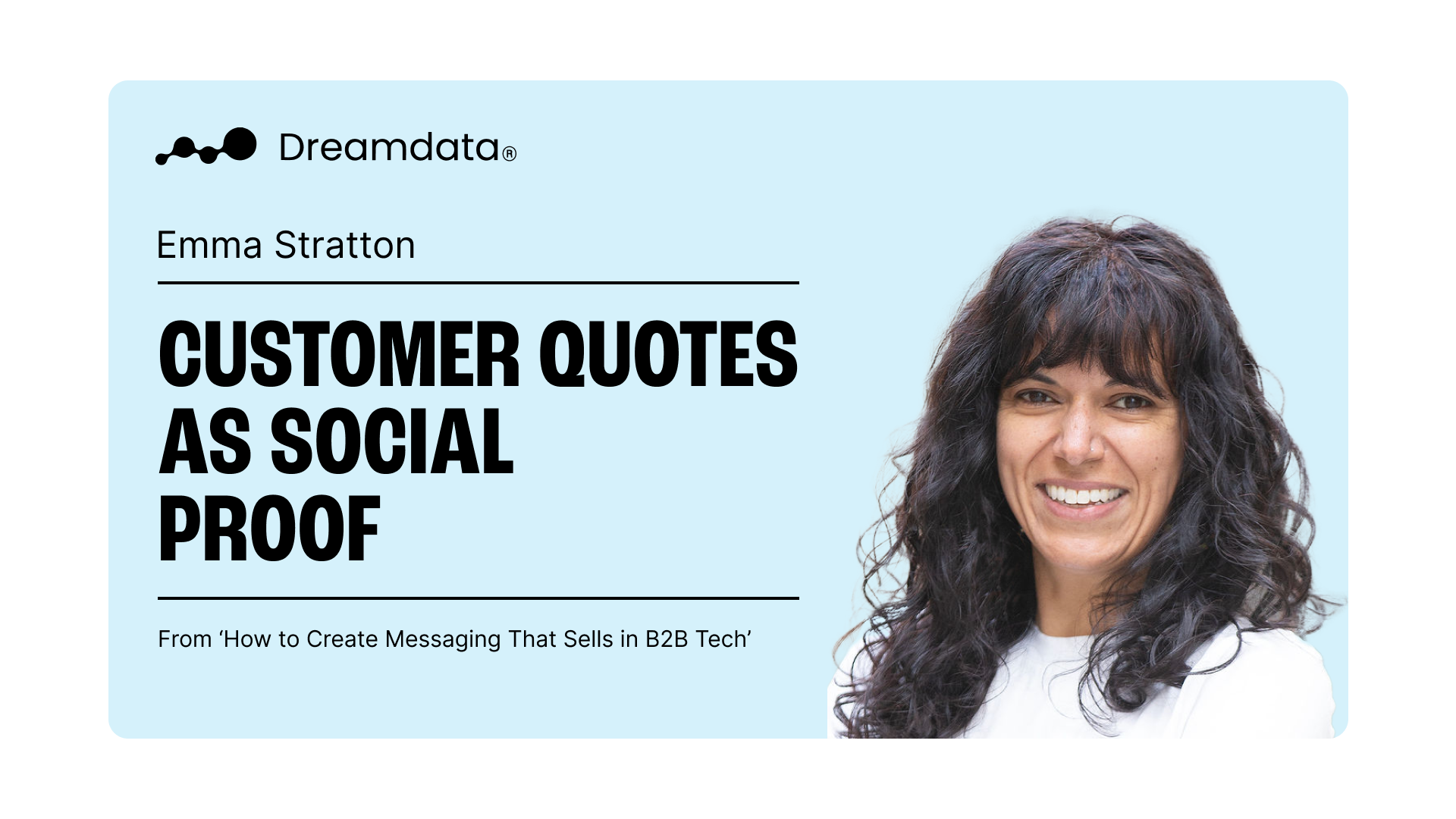How to Create Messaging That Sells in B2B Tech
Strong messaging is at the heart of every successful B2B strategy. Without it, even the best products struggle to make an impact.
Emma Stratton, founder of Punchy and author of Make it Punchy, is a leading voice in B2B messaging. With nearly a decade of experience helping companies like Salesforce and Oracle, she's guided teams in crafting clear, impactful messaging that stands out and drives results.
In a recent discussion for the Attributed Podcast, Emma shared her expertise on building and achieving this caliber of messaging.
This article distills Emma’s advice, providing a positioning and messaging framework for B2B marketers to connect with their audience truly.
Check out the entire conversation here.
Positioning
Positioning is the foundation upon which all successful messaging is built.
Positioning is just deciding what is your product, who is it for, and what is the number one value that audience is going to get from it.
To position right, clearly define your company's unique identity, identify your target audience with precision, and articulate the distinct value you offer.
Without the integral clarity of positioning, your messaging, sales strategies, and even product development efforts can suffer, becoming fragmented and ineffective.
To learn more about positioning, check out our conversation with April Dunford.
Common positioning mistakes to avoid
Emma identified several recurring pitfalls that can hamper effective positioning:
An excessively broad target audience: Many companies attempt to appeal to the widest possible audience, resulting in a diluted message that fails to resonate with any specific group. Instead, focus on a well-defined niche and become the go-to solution for that specific segment.
An overemphasis on the future: While a good vision for the future is important, your messaging should primarily address the current needs and challenges of your customers. They are seeking solutions for present pain points, not vague promises of future benefits.
Confusing a "positioning exercise" with true positioning: Positioning is not a one-and-done feat. It's an ongoing process that should inform every aspect of your business. Ensure your positioning statement is not a document gathering dust, but a living guide.
Translating positioning into messaging
Once your positioning is established, the next step is transforming it into actionable messaging.
In essence, messaging is the process of translating your positioning into clear, concise, and compelling language that resonates with your target audience and drives action.
Emma’s VBF Framework simplifies this process by organizing messaging into three interconnected elements:
Value Proposition: Begin with a concise and compelling statement that encapsulates the primary value your product offers. It should clearly answer the question, "Why should a customer choose your product or service?"
Benefits: Benefits articulate the specific outcomes customers can expect when they engage with your offering. They highlight the tangible improvements your product or service will bring to their business.
Features: Finally, features explain the specific attributes and functionalities that deliver the benefits. They provide evidence to support your claims and demonstrate how your offering works.
For more on effective messaging, check out this conversation with Anthony Pierri.
Use customer voice in your messaging
Emma highlighted the importance of making use of language that reflects how customers think and talk about their challenges in your messaging.
By mirroring customer language, businesses can make their messaging more relatable and effective. Using authentic voices can also validate your claims and build trust with potential buyers.
You can use customer quotes to say the things that are tacky for you to say and if a customer says it it's powerful.
To implement this, Emma encourages teams to collect testimonials and quotes from satisfied customers.
By creating a library of customer testimonials and quotes, categorized by the specific benefits they highlight, you can incorporate these testimonials into your website, marketing materials, and social media content to strengthen your message and showcase the real-world impact of your offering.
Testing and refining messaging
Effective messaging also requires real-world validation.
Emma suggested involving sales teams early in the process, as they interact directly with customers and can provide immediate feedback on whether the messaging resonates.
Sales professionals are uniquely positioned to provide immediate feedback. Often making them first to notice if a message captures attention or falls flat, as they are constantly testing messaging in real-world scenarios.
Emma recommends asking sales teams what phrases or approaches have sparked interest in the past and which ones failed to land. This input can provide insights into messaging that truly connects with your audience.
Additionally, Emma suggested using live interactions, such as outbound emails or LinkedIn posts, to gauge audience reactions. By observing responses in these settings, you can refine messaging to ensure it is both compelling and relevant.
The Barbecue Test
Emma's "Barbecue Test" is a simple way to assess the clarity and relatability of your messaging. It encourages marketers to avoid industry jargon and adopt a more conversational tone.
The premise is straightforward: if your messaging wouldn't feel natural in a casual conversation, it's likely to be ineffective with your target audience.
Strive for language that is clear, concise, and easily understood by individuals both within and outside your specific industry.
Stay consistent
Resist the urge to tweak your messaging too soon.
When you have new messaging give it at least six months to see how it's working.
Messaging needs time to gain traction, and constant tweaking can undermine its effectiveness. Emma advises giving new messaging at least six months before making significant changes.
Final thoughts
Let your messaging be the bridge between your vision and your audience’s needs.
As Emma emphasizes, effective positioning and messaging are built by narrowing your focus, crafting messages that reflect your customers’ voices, and committing to consistency.
Remember, the key isn’t just to communicate. It’s to connect deeply, ensuring your audience feels recognized, understood, and motivated to take action.
To delve deeper into B2B messaging, explore Emma's book, Make it Punchy.
About the speaker
Emma Stratton is the founder of Punchy and author of Make it Punchy. With nearly a decade of experience helping B2B tech companies craft clear, impactful messaging, she’s a trusted expert in positioning and communication. Known for her human-centered approach, Emma transforms complex ideas into messages that connect and inspire.







